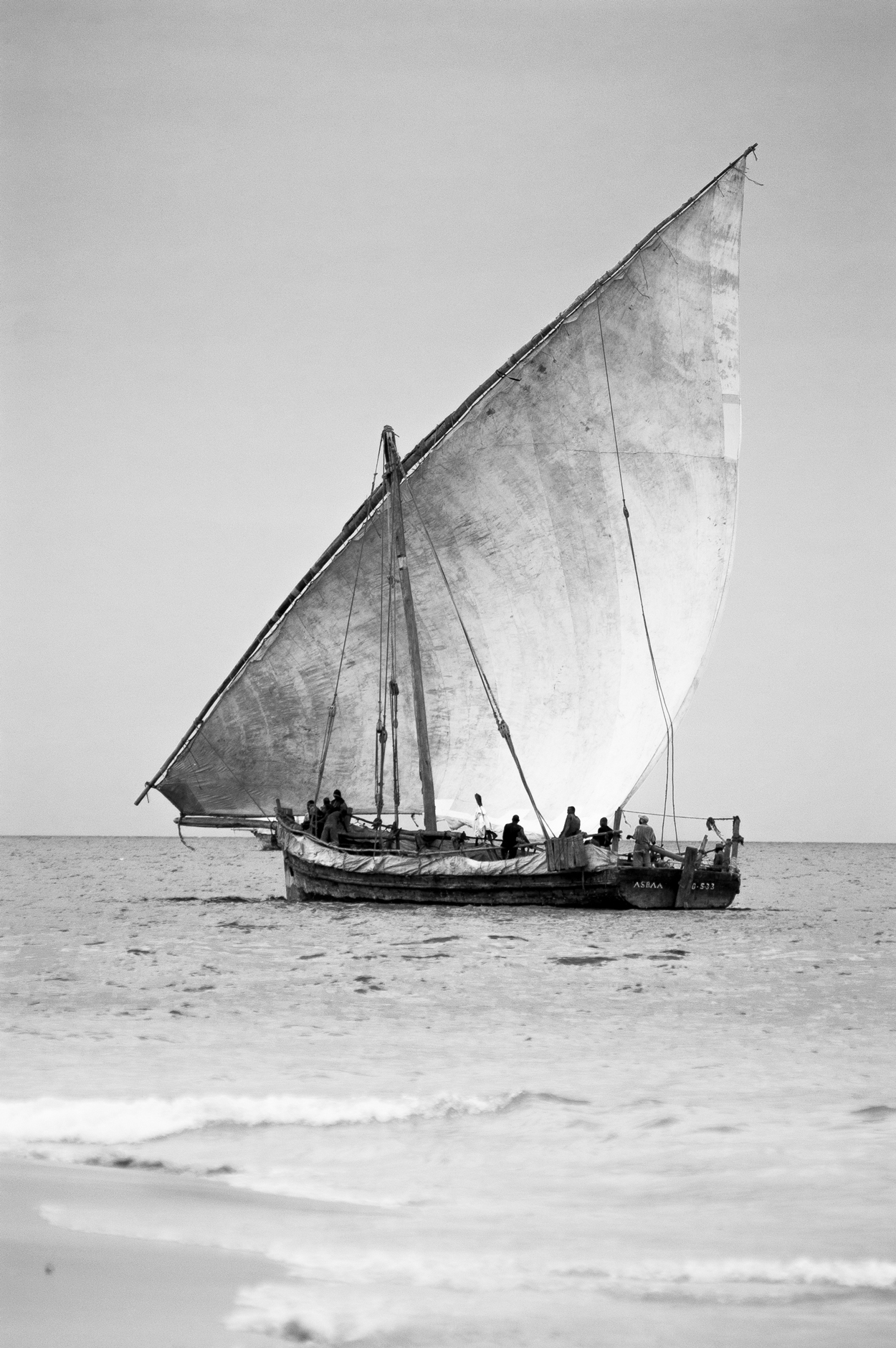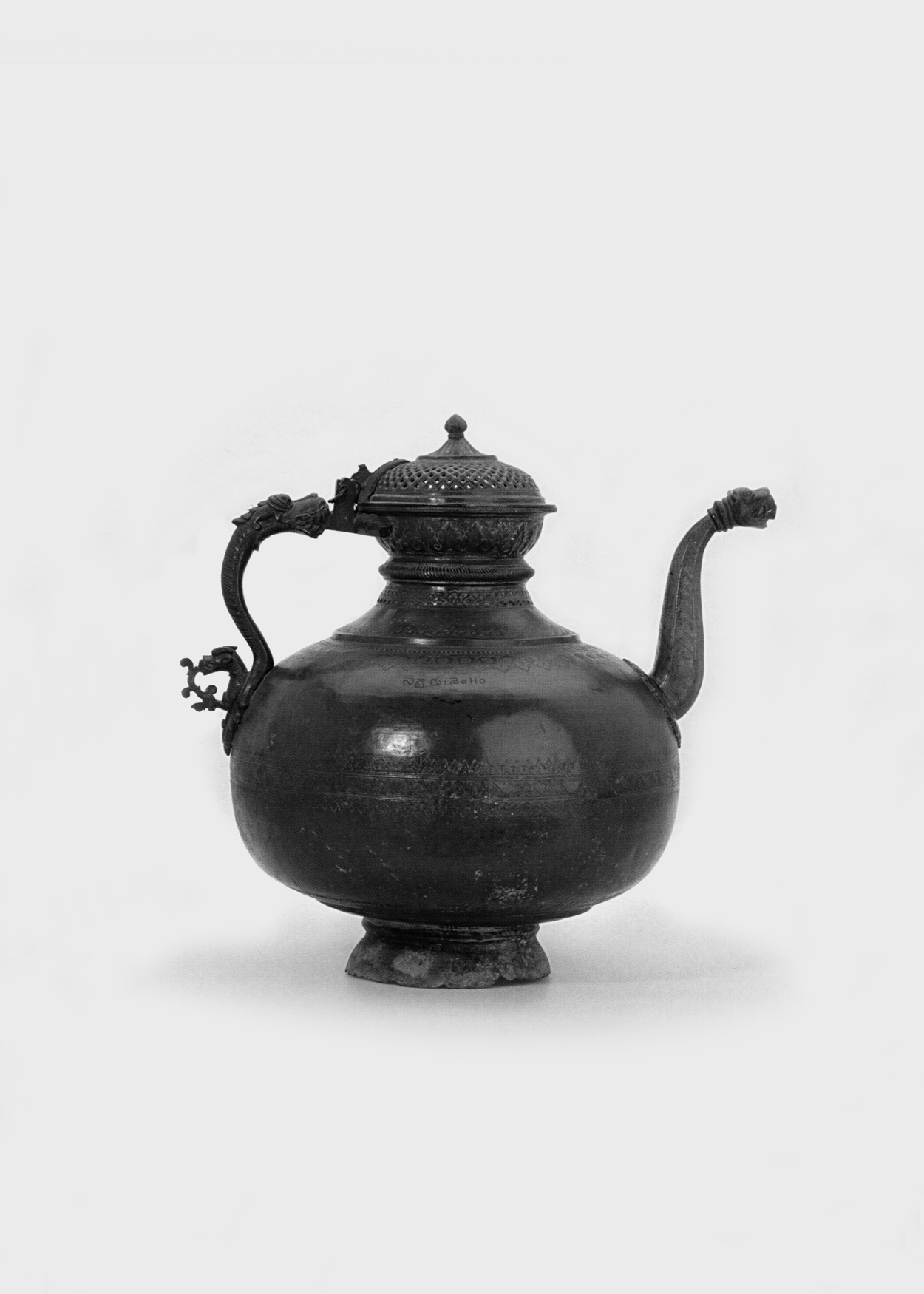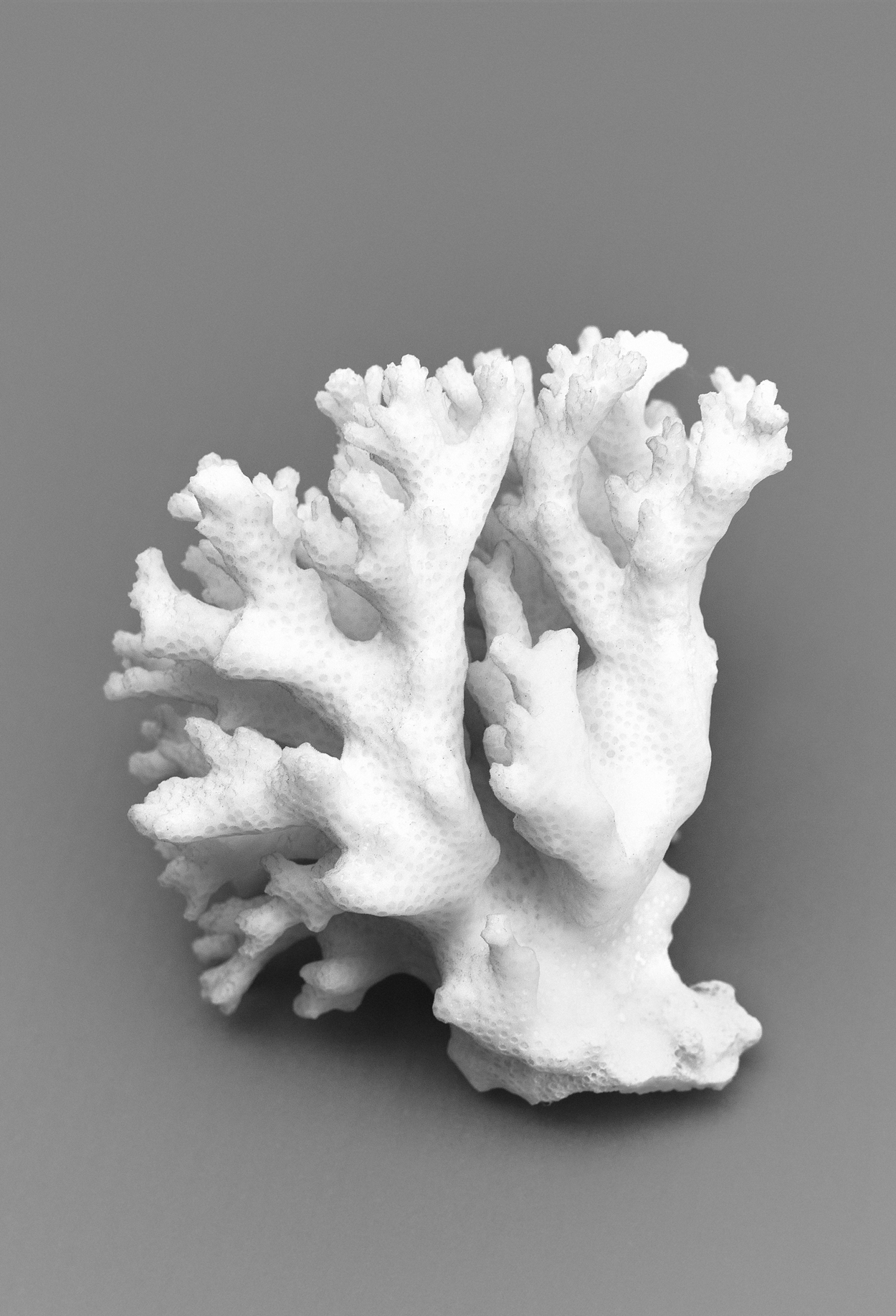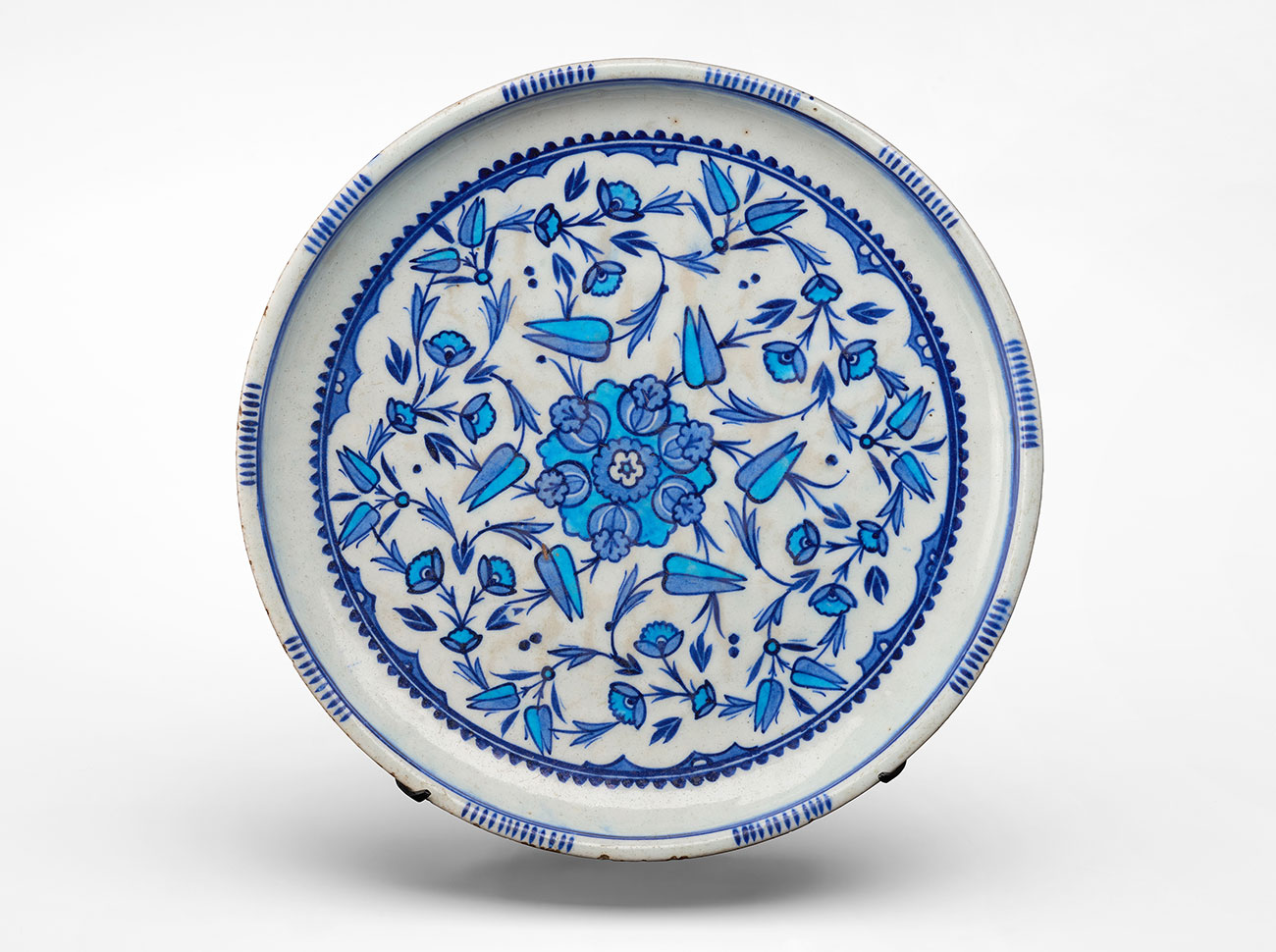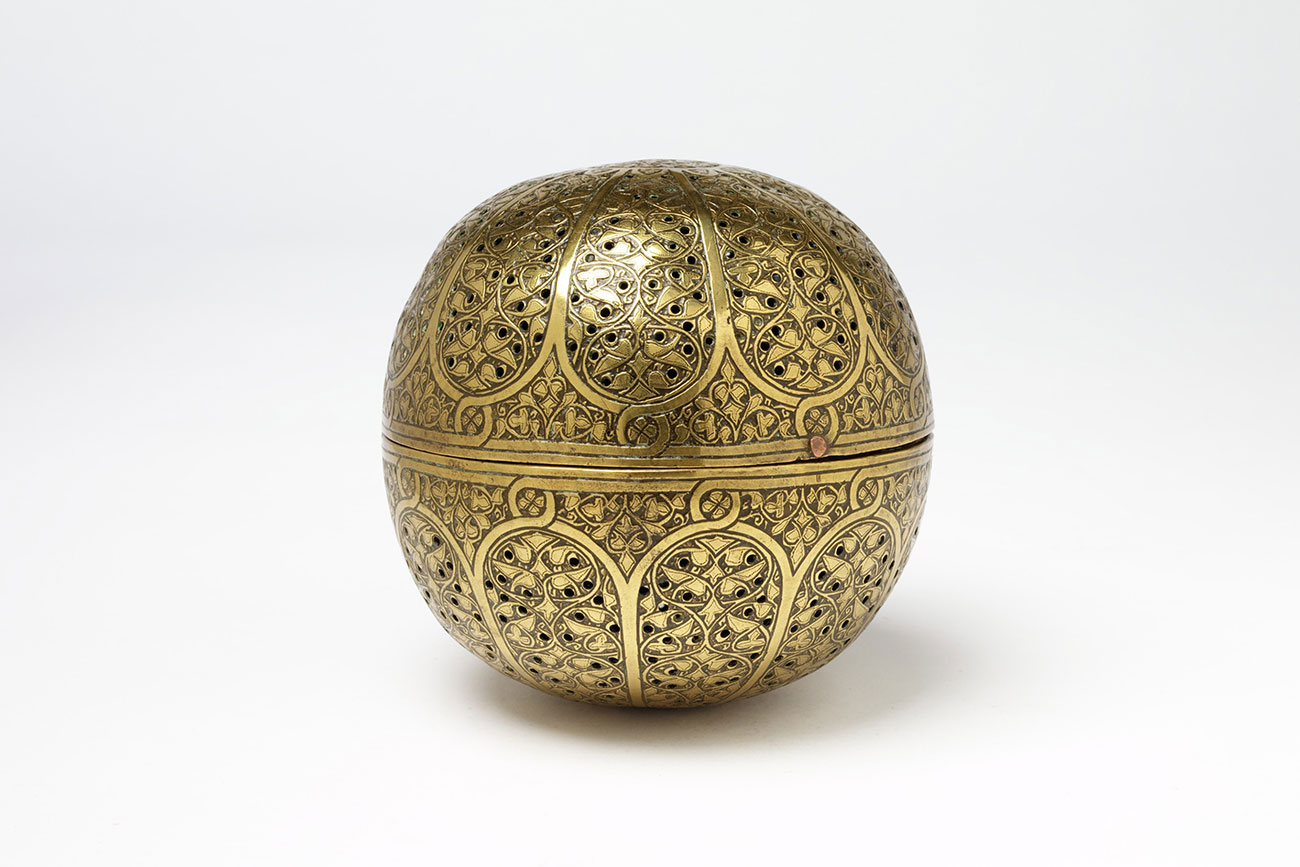Seafaring Adventurers
Mediterranean_Indian Ocean 7th–17th centuries
Mucem, J4—
Niveau 2
|
From Wednesday 7 June 2017 to Monday 9 October 2017
Last days of the exhibition
This exhibition, a first version of which has been on display at the Arab World Institute since November last, will be opening at the MuCEM on 7 June 2017. This new version, comprising more than 200 pieces from 50 museums and institutions from Lisbon to Singapore, takes visitors through the crossroads between African gold and Western silver, the glassworks of Venice, and the porcelains, silks and spices come from the China Seas. Far from forming obstacles, oceans have, to the contrary, historically enabled encounters, exchanges and trade with others. After having long conceived of the sea as a perilous place, mankind soon learned to overcome their fears and develop different bodies of knowledge that would allow them to venture ever farther – and ever more safely – in pursuit of the treasures of the Orient. The development of this maritime knowledge and exploratory navigation made it possible to consider the planet’s geography as a whole and then, from Christopher Columbus to Magellan, to learn to travel the globe on a quest for fortune to be made, souls to be converted and novelties to be discovered. At a time when the intensification of the processes of globalization appeals to the humanities, this exhibition presents a global history of the Ancient World. Whilst drawing links between the various histories of cities, States and empires, the course of this exhibition is a testimonial to their exchanges, their relations and, in the end, their convergence in an interconnected history.
Curators: Vincent Giovannoni, Conservator at the MuCEM, and Nala Aloudat and Agnès Carayon, Collections and Exhibitions Coordinators at the Arab World Institute
Exhibition space design: Atelier Maciej Fiszer
Catalogue co-edited with the Arab World Institute and Hazan
Interview with Vincent Giovannoni, curator at the Mucem and commissioner of the exhibition
| Mucem (M) | A thousand years of history, three continents... The subject of this exhibition seems particularly vast. How would you sum it up?
|
| Vincent Giovannoni (VG) | This exhibition proposes that we consider history as seen from the sea. It gives an account of a thousand years of ‘old world’ history, at the intersection of Europe, Asia and Africa. It begins in the 7th century with the establishment of an empire surrounding two seas, the Omayyad, which reigned over the Mediterranean and the Indian Ocean, enabling development of maritime trade between these two worlds. The Indian Ocean was then the richest and most desired market in the world, both by Christians and Muslims. Beautiful porcelain and the most magnificent silks originated there. This is also where the mines of King Solomon from the Bible were found. Consequently, various strategies were developed to gain access to this market. And then, through trade, one met ‘the other’. From the history of these encounters, the exhibition neither eludes slavery nor the attempts to evangelize undertaken by the Europeans. It tells the tale of a thousand years of commercial projects and in the end, economic wars between the two worlds, Eastern and Western.
|
| M | The exhibition unfolds in three sections. In the first, dedicated to « Fears of the Sea », visitors see themselves swept up by storms and sea monsters!
|
| VG | In ancient times, the sea was the source of great fear. In order to help visitors enter into the mentality of those in the Middle Ages, we have transformed this fear of the sea into scenography through the projection of a real storm (filmed by Yann Arthus-Bertrand’s team) and the display of an immense jaw more than two meters high of a Carcharodon megalodon, an ancestor of the shark, which disappeared 1.5 million years ago. In the Middle Ages, when this type of fossil was found, one was convinced that it was from an animal still living in the seas! One never doubted the existence of an animal 50 meters long with gigantic jaws capable of devouring not only a human, but an entire ship, in a single bite.
|
| M | In the second section, « Navigation, an Intelligence of the World », you give special attention to cartography...
|
| VG | Nautical charts allowed sailors and those who financed their expeditions to grasp the distances to be covered. Towards the end of the Middle Ages, the evolution of cartography was fairly rapid and eventually allowed a faithful image of the planet to be created. In the exhibition, one can cite the sumptuous map by Fra Mauro, representing the entire ancient world - Africa, Europe, Asia - in 1459. Beside it there is a photo taken from outer space by NASA in 2016: though 500 years apart, these two representations are practically identical! It is amazing to realize that in the 15th century, in a monastery in Venice, men had a vision of the planet that was almost as accurate as the one that NASA has today...
|
| M | In the last section, « Coveting Commodities », a few of the Old World’s most beautiful riches are showcased...
|
| VG | Here, one will discover some of the splendid objects that motivated sailors to take to the seas and risk their lives from the 7th to the 17th century: enamelled glass, encrusted metal, pieces in ivory or ebony, diamonds, porcelain, cotton fabrics... For this exhibition we have borrowed nearly two hundred pieces from about fifty museums throughout the world, from Lisbon to Singapore. Exceptional works, of very high value, many of which have never been shown in France.
|
| M | In this exhibition, you will see gold, incense, silk, spices... But in the end, not so much about the explorers!
|
| VG | Among the seminal works in the exhibition, I could cite this immense tapestry from the early 16th century depicting the arrival of Vasco de Gama in India... Marco Polo, Magellan, Christopher Columbus, for example, are also present. But being a museum of civilisations, rather than highlighting the ‘heroes’, the Mucem gives prominence to cultures, civilisations and exchanges. In the exhibition, we present works by the best artisans of the ancient world, which justified going great lengths to establish trade over this period of a thousand years. The work of these artisans (goldsmiths, jewellers, glassmakers, sculptors, potters, weavers and cabinetmakers) is very valuable and their production was sought out by the powerful the world over. What is important to us, finally, are the intercultural relations, the exchanges between civilisations. The pieces that we showcase testify to the fascination that products from the Orient generated in the Middle Ages, and for which empires went to battle. At the same time, these ocean explorers paved the way, revealing little by little the world in its immensity, rich with a future open to all possibilities.
|
Catalogue en coédition avec l’Institut du Monde Arabe et Hazan.
Découvrir
L’Institut du Monde Arabe est co-producteur de l’exposition.
Exhibition itinerary
1—The sea : risking life and limb
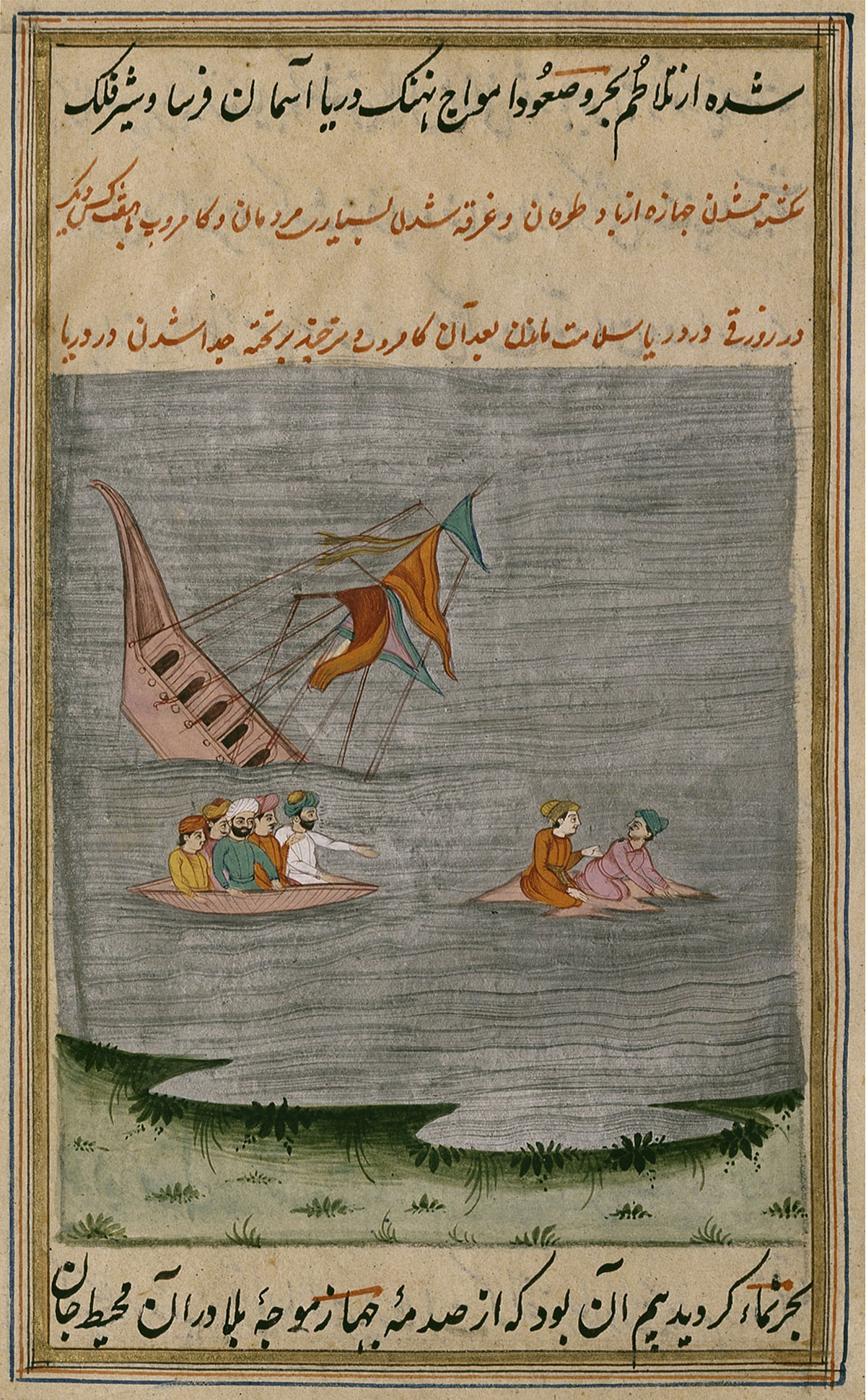
This exhibition opens with a representation of the sea, with its impetuous movements and its monsters, real or imagined. To set out to sea was to venture on a journey to uncertain horizons populated with strange creatures, but it also meant exposing yourself to very real dangers in the form of storms, reefs and shipwrecks. Dangerous attacks by pirates made each sea voyage extremely perilous, and travellers could never be certain of surviving it.
2—Navigating : understanding the world
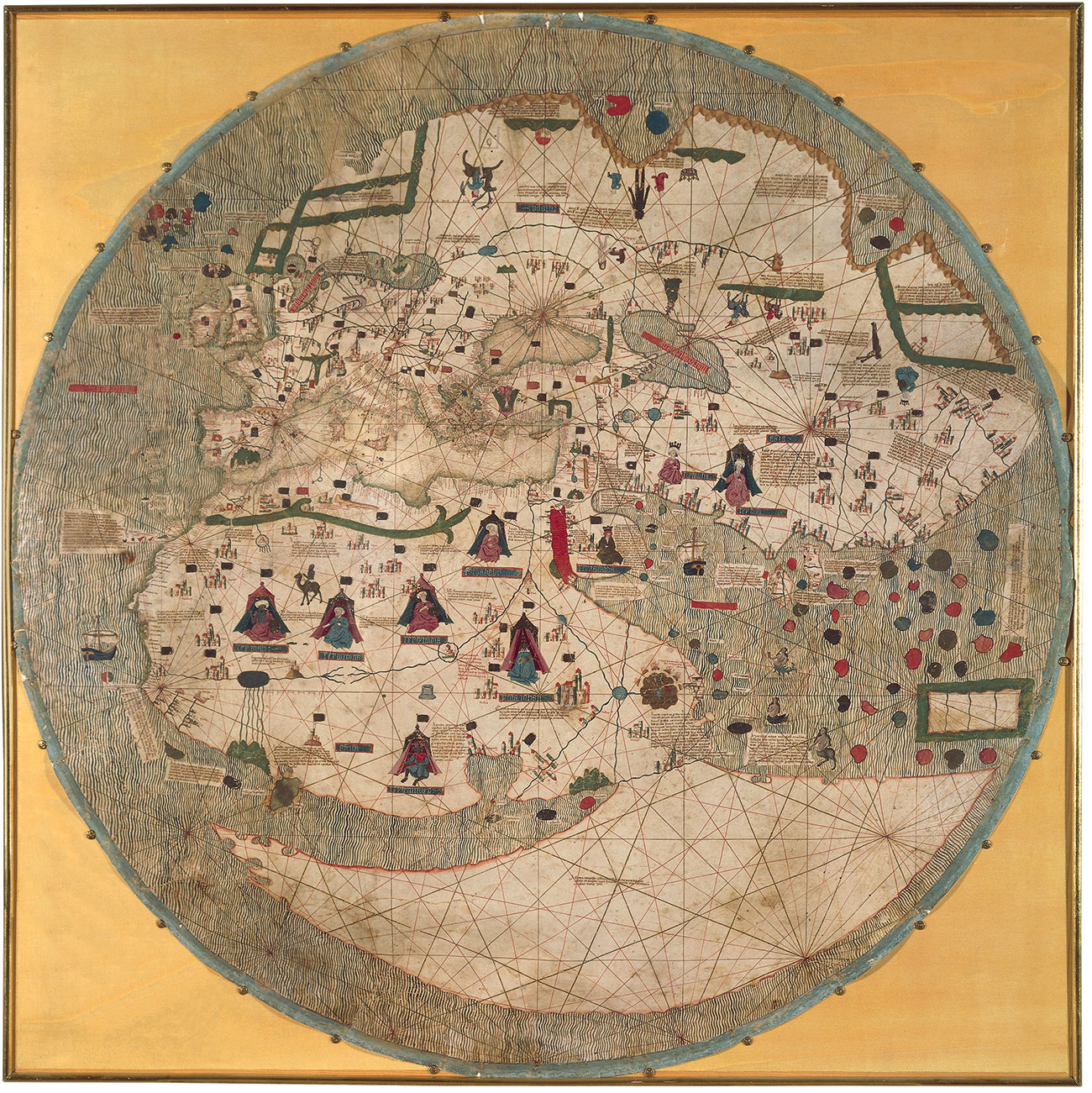
In olden times, sailors navigated mainly by sight, following the coast from their home port to their destination. To sail to a more distant port, it was customary to hire the services of a pilot capable of navigating from experience. The details of the sea voyage were carefully noted down, with descriptions of the navigational routes, entrances to ports and reefs to avoid. Men were thus able to travel further, more safely and more quickly. Motivated by the prospect of large profits, sailors and traders developed a strong spirit of initiative and, by opening up the way for new adventures, set out together to conquer the world.
3—Goods and greed
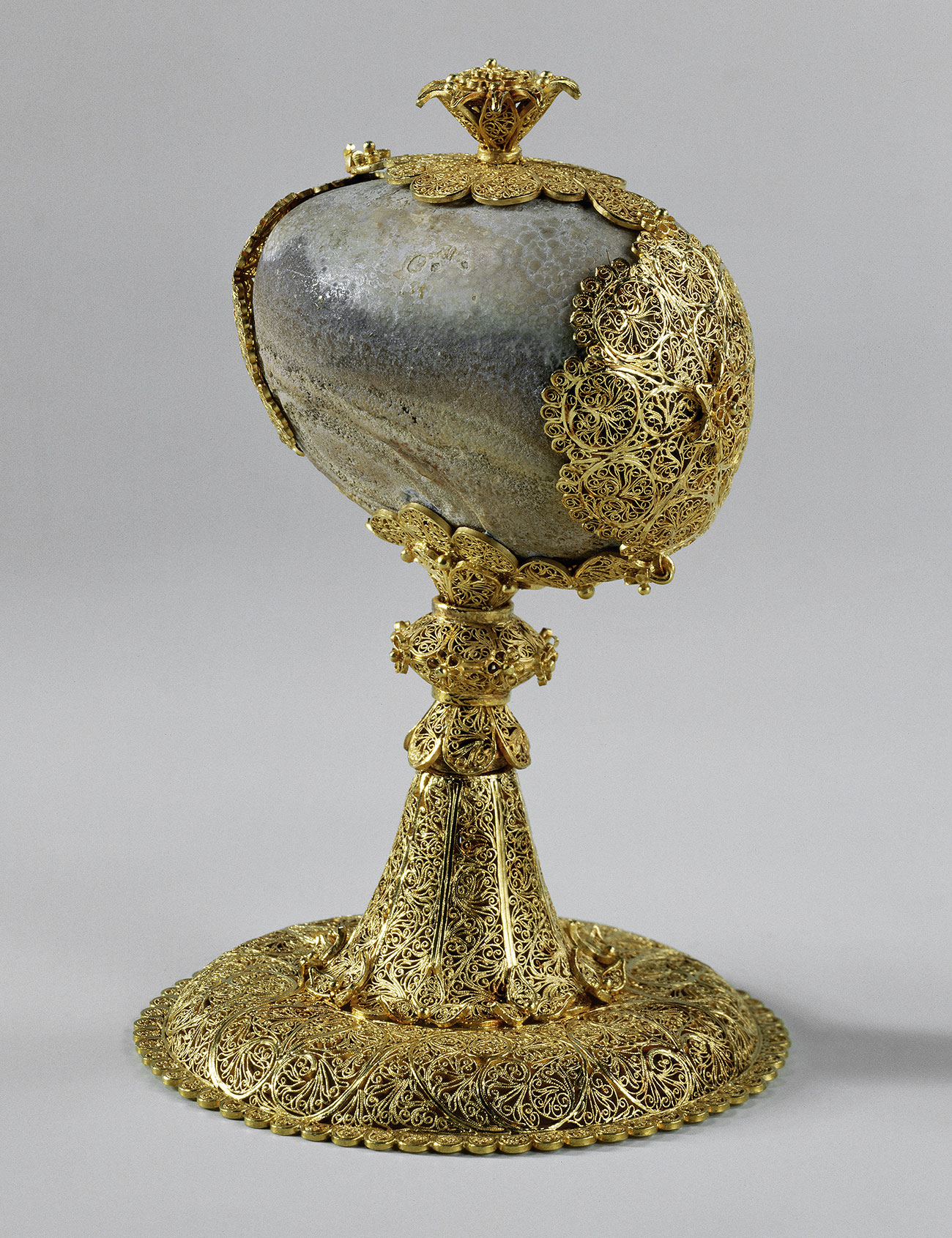
A sea route to India was sought because it was one that led to spices, textiles and precious materials, goods that were all the more valuable in that they were a long way away. Spices, ivory, porcelain, silk and cotton, pearls and precious woods fascinated traders, adventurers and sailors alike. With the emergence of Islam, traders from the Arabian Peninsula played a central role in exchanges between East and West, which they gradually came to dominate.
4—Expansion towards a globalised world
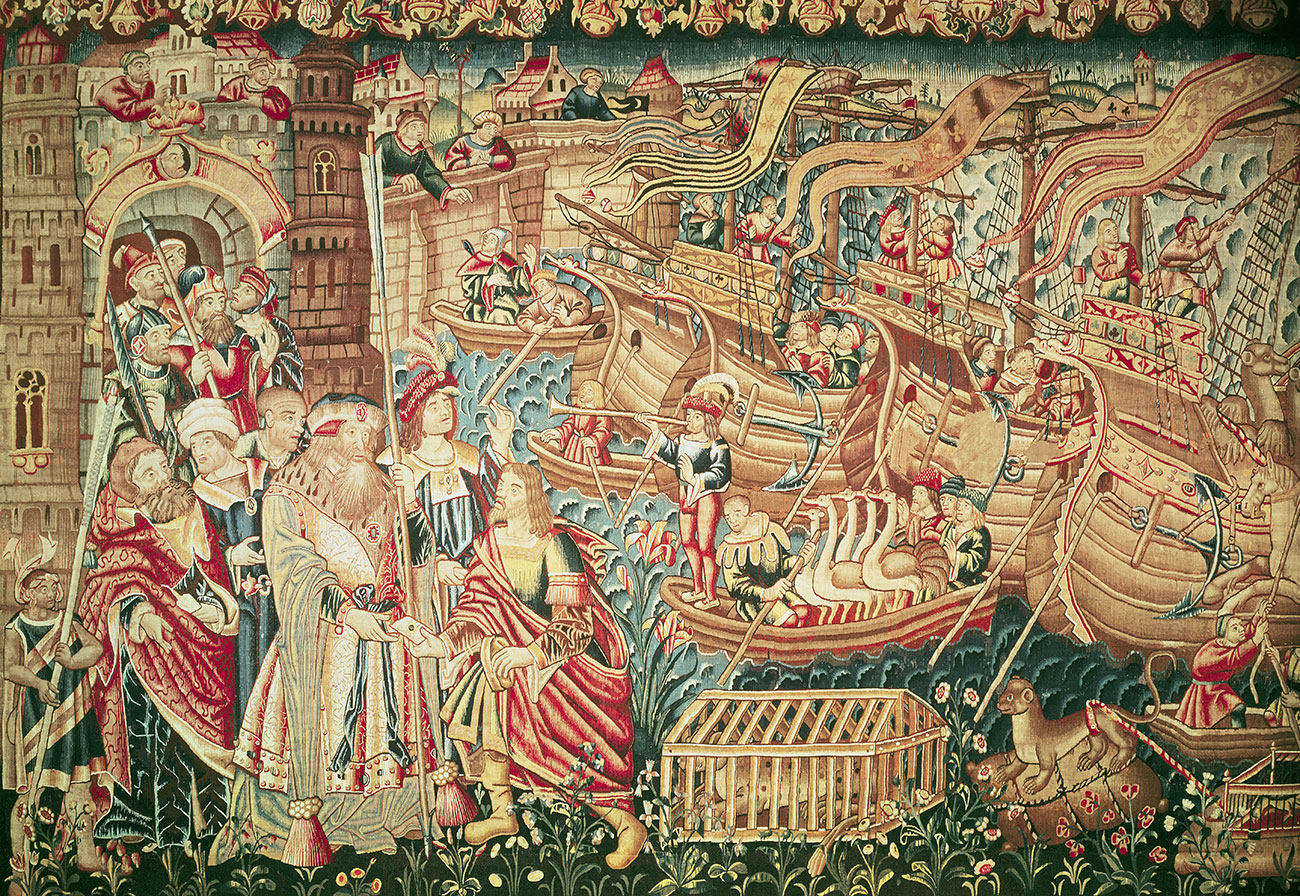
In 1453, the Ottoman Turks took Constantinople and now reigned over the trade routes for goods from the East. To take advantage of this trade and to bolster their power, Christian traders and rulers tried to circumvent the old networks and open up new routes. It was against this backdrop, in the 15th century, that the Portuguese reached the Indian Ocean, at the time the largest market in the world. In 1498, Vasco de Gama was the first European to sail up the eastern coast of Africa to reach India. The maritime route that he opened up would change the dynamics of exchanges between East and West forever.
5—Conclusion
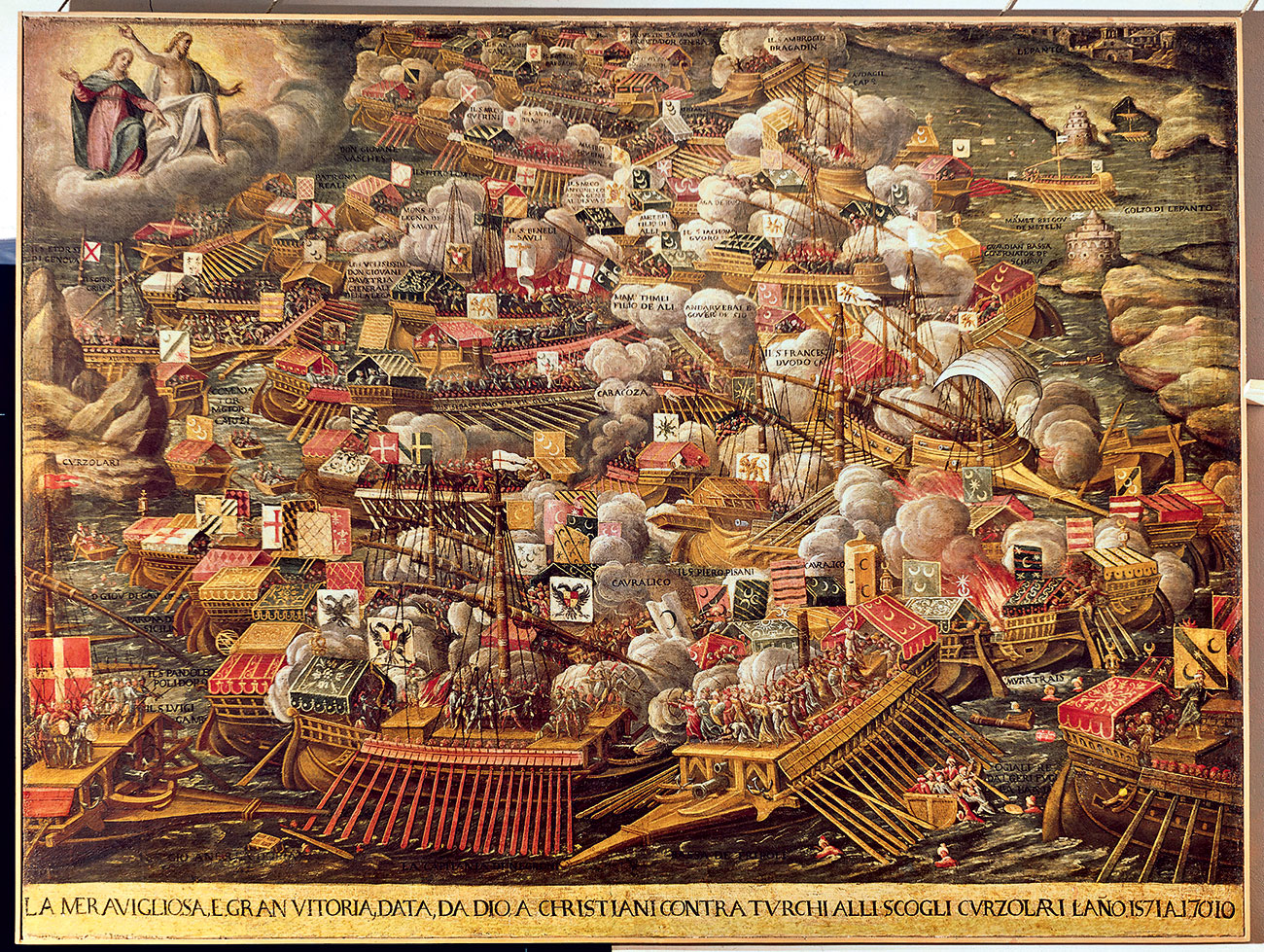
The exhibition concludes with two key events. In the late 16th century, competition for maritime markets and for power was taking place all over the planet, and the great powers were fighting each other for a share of space that corresponded both to their respective ambitions and the means at their disposal to impose them on others. The naval battle of Lepanto, in 1571, enabled the Holy League to check Ottoman expansion over maritime trade in the Mediterranean, while in 1602, the creation of the Dutch East Indies Company marked the end of the Mediterranean monopoly of trade with the Indian Ocean.
Downloads
Journal de l’exposition .pdfPartners and sponsors
En partenariat avec l'Institut du monde arabe et avec le mécénat de Groupama Méditerranée et de la Fondation d’entreprise Total.
In partnership with : Arte , France Médias Monde, Le Figaro Magazine, France Bleu Provence, France Info
